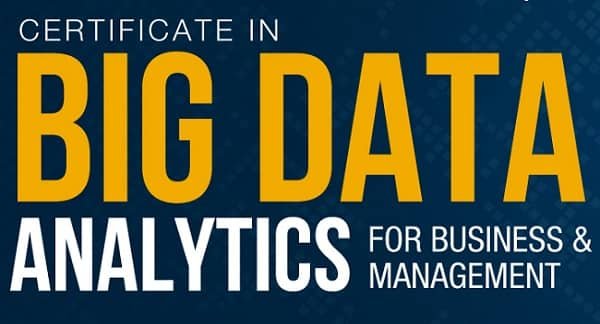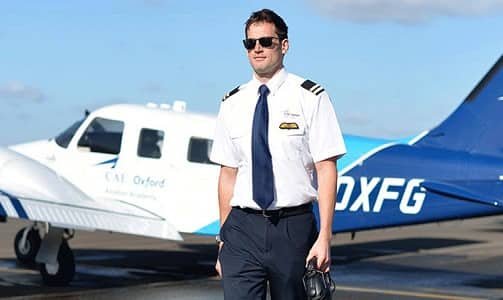You all must be aware that engineering is divided into several branches. These branches include computer engineering, mechanical engineering, electronics and telecommunication engineering, civil engineering, chemical engineering, and many other fields. There is another popular branch of engineering, which is known as aeronautical engineering. This particular branch is of interest to the students interested in airplanes and the similar flying miracle of engineering. This branch not only teaches you about the aircraft, but it also teaches you about propulsion systems and aerodynamics as well. There are multiple courses offered in aeronautical engineering, but the most popular one remains to be B.Tech & M.Tech.
If you are interested in aeronautical engineering, then you are in the right place. In this article, we have listed all the information about aeronautical engineering. Before we begin, we would like to talk a little more about aeronautical engineering. Aeronautical engineering has a vast syllabus, and it requires a lot of hard work and strong concepts in mathematics & physics. If you plan to work in the aviation industry, then this is the right field for you. A lot of organizations working in the manufacturing of defence equipment also hire aeronautical engineering. So, let us go ahead and talk about the details of aeronautical engineering.
Aeronautical Engineering – Introduction
After you become an aeronautical engineer, you will get a chance to work closely with the aviation industry. Many aviation manufacturing units exist in India, and some countries are expanding their portfolio in India. You can work in any such phase of the development of an aeronautical vehicle. It could be the planning, designing, development, testing or even investigation part. You may get a chance to work on commercial plans, fighter planes, helicopters, UAVs, shuttles, missiles, and many other things. The jobs are not just restricted to the private sector, but government organizations like ISRO & DRDO hire aeronautical engineers regularly.
In this article, we will talk about the certification courses associated with aeronautical engineering. We will sync up on these aeronautical engineering certification courses as their primary purpose is to give you knowledge and exposure to a specific topic. We will then talk about the B.Tech in aeronautical engineering as it is the most popular undergraduate course. After talking about B. Tech, we will talk aboutM.Tech in aeronautical engineering and PhD as well. These three are top-rated courses, and we are sure that learning about them will help you choose the career option for yourself. Let us start by reviewing the skillsets required to pursue aeronautical engineering.
Aeronautical Engineering – Skillset Required
It is not always about eligibility, and you must also possess some of the skillsets that would help you succeed in a profession. Below are some of the points that would correctly define the skillsets that can help you succeed while pursuing aeronautical engineering at any level.
- If you wish to perform well in the field, you must have strong physics and mathematics. If you are a student who hates mathematics, then you should reevaluate your decision.
- You must have sharp observations skills if you plan to work as a maintenance engineer or as a traffic controller. Aeronautical engineers can also work in these fields.
- You should have speed and accuracy while you are doing any analysis, and this remains to be one of the most critical skill set.
- Another required skillset is good manual, mechanical and technical aptitude.
- While working in aeronautical engineering, you are responsible for passengers’ lives, and hence you need to have a strong sense of responsibilities.
- Hazards also surround you, and hence it would help to have an alert nature.
- Having leadership qualities and analytical abilities is always an add-on, no matter which field you work in.
- Lastly, you should be physically fit, and you should not be colour blind. Your eyesight should be perfect, and it is fine even if you use specs.
Aeronautical Engineering – Eligibility Criteria
We talked about the skillsets required for aeronautical engineering in the previous section. If you have these skill sets and if you would like to pursue your career in aeronautical engineering, then check out the eligibility criteria as well.
- The candidate should have Physics, Chemistry and Maths in Class XII and he should score at least 70% to get a good college.
- The candidate should appear in the relevant entrance exam, and he should have English as a compulsory subject.
- If the candidate is looking for admission in B.Tech, then he should have completed the 12th. Similarly, if the candidate is looking for admission in M.Tech,he should have completed B.Tech with at least 50%.
- If you are looking for admission in the PhD program, you should hold a valid Post Graduation Degree from a recognized institute.
- The exact eligibility criteria may vary from institute to institute, so we recommend checking the details on the college and university website that you are interested in.
Aeronautical Engineering – Admission Process& Fee
In this section of the page, we have listed the admission process associated with aeronautical engineering. Check out the details below.
- For admission in B.Tech, you need to appear in one of the entrance tests. JEE and AIEEE are the common entrance tests, but there are different tests for different universities. Private universities may have separate entrance exams, so you need to check that out with the college you are interested in. For M.Tech, most of the colleges offer admission based on the score of the candidate in GATE.
- After the results are announced, the candidate needs to check out the cut-off of the respective colleges, and after that, they need to go for counselling. The candidates will have to go through GD-PI or only PI. It depends on the institute on what kind of admission process they conduct.
- Post result announcement, you will have to submit the documents for verification, and you will also have to deposit the fee. The admission is confirmed after the fee has been deposited. You can check about the academic session dates after college.
- The PhD admissions are based on Merit, so you need to check that with the HOD of the college, and you will get the details of PhD admissions.
Talking about the fee of B.Tech, it can be anywhere between Rs 10,000 to Rs 2 Lakhs, and it depends on the institute. Government institutes are certainly a lot cheaper than private institutes. In addition to this, the fee for M.Tech varies between Rs 10,000 to Rs 80,000. This fee is for a year. During your M.Tech or your PhD, you are also eligible for a stipend so you can easily manage your living expenses.
Aeronautical Engineering – Syllabus
The subjects that you learn in B.Tech and M.Tech are more or less similar. The depth of knowledge varies. In addition to this, there is one other glaring difference. In B.Tech, you need to go through all the common subjects like Physics, Computes, Mathematics, etc., whereas, in M.Tech, you are only taught the specializations. Check out the list of subjects that you will learn during B.Tech & M.Tech.
| Aero Engine and Airframe | Engineering Physics |
| Aero Engineering Thermodynamics | Engineering Practices Laboratory |
| Aerodynamics | Environmental Science and Engineering |
| Aerodynamics Laboratory | Experimental Stress Analysis |
| Aircraft Design Project | Finite Element Methods |
| Aircraft Materials and Processes | Flight Dynamics |
| Aircraft Structures | Flight Integration Systems and Control Laboratory |
| Aircraft Structures Laboratory | Fluid Mechanics and Machinery |
| Aircraft Systems and Instruments | Fluid Mechanics and Machinery Laboratory |
| Aircraft Systems Laboratory | Manufacturing Technology |
| Avionics | Mathematics |
| CAD and Aircraft Component Drawing | Mechanics of Machines |
| CAM and Manufacturing Laboratory | Numerical Methods |
| Communication and Soft Skills- Laboratory-Based | Physics and Chemistry Laboratory |
| Composite Materials and Structures | Principles of Management |
| Computational Fluid Dynamics | Propulsion |
| Computer-Aided Simulation | Solid Mechanics |
| Computer Practices Laboratory | Strength of Materials Laboratory |
| Computer Programming | Thermodynamics Laboratory |
| Control Engineering | Total Quality Management |
| Elements of Aeronautics | Transforms and Partial Differential Equations |
| Engineering Chemistry | Vibrations and Elements of Aero-elasticity |
| Engineering Graphics | Wind Tunnel Techniques |
Aeronautical Engineering – Job Profiles
There are several job profiles available after you complete B.Tech or M.Tech in aeronautical engineering. It depends on your interest, and it also depends on the specialization you choose during your education. We have listed some of these options below, and in addition to this, you can explore other options as well. If you are not interested in doing a regular job, you can work as a researcher or as a professor.
- Assistant Aircraft Engineer
- Aeronautical Engineer
- Aerospace Engineer
- Aeronautical Electronic Engineer
- Aeronautical Mechanical Engineer
- Assistant instructor
- Design Engineer
- Flight Engineer
- System Safety Management Engineer
Aeronautical Engineering – Recruiters & Career Prospects
Candidates who pursue aeronautical engineering have can have a promising career in the aviation or defence industry. This branch is well-known, but you should have the required skills for the job. In addition to this, you must have pursued aeronautical engineering from a good college. If all the factors are combined, you can have a good career in India and abroad. After completing B.Tech or M.Tech, you have the provision of going for higher education, or you can look for a job. In addition to this, if you would like to pursue some certification course to enhance your skills, you can check out some of the options below.
- Certificate in Aero-Elasticity
- Certificate in FEA and ANSYS
- Certificate in Gas Turbine Engineering
- Certificate Linear & Non-linear Modeling
- Computational Fluid Dynamics & Training Certificate
- Professional Simulation Engineer
We have talked about job profiles, and we have also talked about a lot of other important information. We are sure that you would be interested in knowing about the top organizations that offer a job in India after you complete aeronautical engineering. Before we talk about the companies, we would like to share some information about the salary. After you have completed your B.Tech, you can get a starting salary of anywhere between Rs 3 Lakhs and Rs 12 lakhs. A lot depends on the type of placement that you get in your organization. Apart from this, if you go for M.Tech, the salary would be between Rs 5 Lakh to Rs 20 lakh. Again, a lot depends here on the institute, experience levels and the organization. Now, let us look at some of the top employers in this industry. Below is the list.
- Aeronautical Development Establishment
- Air Asia
- Airbus
- Air India
- Boeing
- Civil Aviation Department
- Dassault Aviation
- DRDO
- HAL
- Helicopter Corporation of India
- Indian Air Force
- Indigo Airlines
- Ministry of Civil Aviation
- Pawan Hans
- National Aeronautical Lab
- Spicejet
- Tata-Vistara
Final Verdict
This was all about aeronautical engineering, and we are sure that you would have found most of the details in the article. All this information is very critical when you are planning your education or your career. Going through the eligibility details and career prospects would have given you a good insight into the course. We would also like to take a moment and mention that aeronautical engineering is an excellent course, especially if you are planning to work abroad. The scope of work outside India is a lot more,especially applicable for countries like the USA, France, and the UK.If you are still looking for more information about aeronautical engineering, you can write back to us, and we will try to help you get the answer to your questions.

Rahul Kumar is a passionate educator, writer, and subject matter expert in the field of education and professional development. As an author on CoursesXpert, Rahul Kumar’s articles cover a wide range of topics, from various courses, educational and career guidance.




